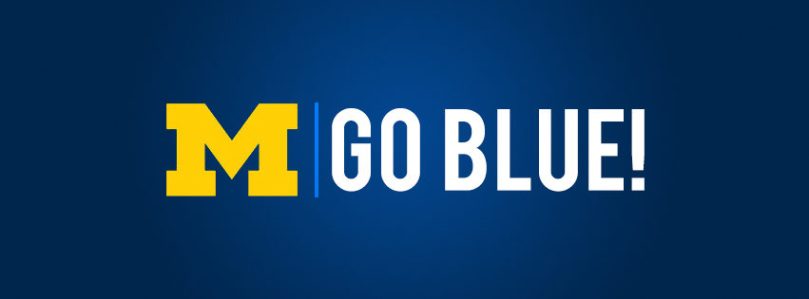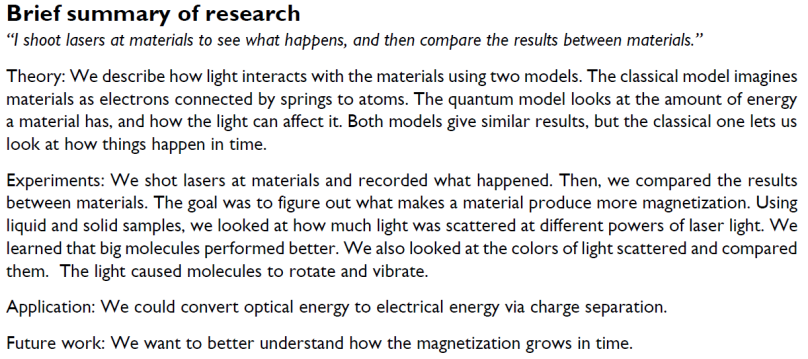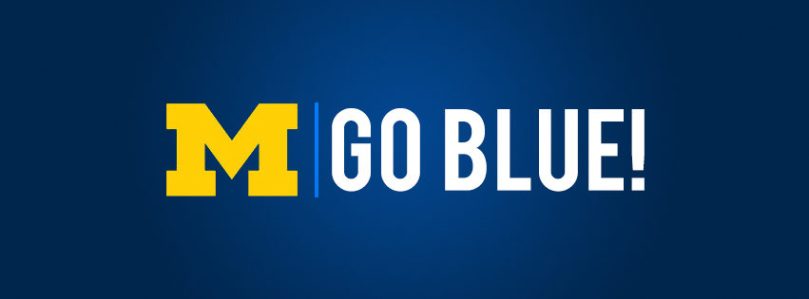*** Disclaimer: The contents of this post are my own thoughts and experiences. This by no means reflects any official advice from any current or future employer.***
Introduction
Applying for a job in management consulting as a PhD student can be a little scary. After all, you’ve been training in a very specific discipline for years; one which likely has little to nothing to do with business. Furthermore, the case interview is nothing like you have seen before. However, do not be afraid! With a bit of time and a bunch of effort, you too can become a management consultant.
I begin this post with a few comments about my journey. The second section covers tips on the application process. I discuss what advice I received and what worked for me. Then, I wrap it all up with final thoughts.
My journey
Let’s get real. Finding a job as a PhD is hard no matter which field you decide to enter. Even if you follow the “conventional” track and try to become a professor, it is still challenging to find the right job in the right location.

What do you want to be when you grow up? That was the question I began to seriously ask myself in the Fall of my 5th year (2016). I had a lot of interests and wasn’t sure which career path to pursue. Science policy? Academia? Industry? Research lab? I began a year-long journey reflecting on what I valued and what I wanted for the next phase of my life.
I’m a fan of personality tests. To begin thinking about my career, in September 2016 I took the DISC personality test from Tony Robbins (https://www.tonyrobbins.com/disc/) as well as his values survey. This was a turning point for me. My DISC results told me that in order to feel optimally motivated that I needed “to work with a team of people with whom you can show your high trust level”, “a variety of activities involving people, both on the job and off” and “a system of support to assist with the details and follow-through”. In short, my DISC test was telling me to stop spending time alone in a dark basement and go work on a team! I began to look for a work environment where I could work with a good team of people.
As the year went along, I crossed out becoming a tenure track professor (for now at least). I am passionate about science and education, but there are more ways to be involved in education than by being a formal professor. I can still do outreach with organizations like the Society of Women Engineers and inspire girls to pursue engineering. I don’t need to be a professor to do that.
I also discovered that although I like research and I enjoy when it works, I don’t love research. It is interesting to me, but it does not define my life. Yes, I do want to solve interesting and complex problems, but the publish-or-perish research cycle of academia had taken the fun out of problem solving. After talking to people at national labs, I crossed out a profession in academic or government research. It just seemed like a continuation of being unhappy, alone in a dark basement.
 Then there was the problem of geography. I am a born and bred Michigander. My family is here. My husband’s family is here. I believe in the future of this State. I didn’t want to move. I considered a career in Science Policy. Yet, most of those jobs are in Washington D.C. and lead to a career working for a three letter government agency (NSF, NIH, DOD, DOE, etc.). I didn’t want to permanently move to the beltway. So, I crossed out pursuing fellowships in science policy (for now at least).
Then there was the problem of geography. I am a born and bred Michigander. My family is here. My husband’s family is here. I believe in the future of this State. I didn’t want to move. I considered a career in Science Policy. Yet, most of those jobs are in Washington D.C. and lead to a career working for a three letter government agency (NSF, NIH, DOD, DOE, etc.). I didn’t want to permanently move to the beltway. So, I crossed out pursuing fellowships in science policy (for now at least).
What options did that leave me? The biggest one remaining was industry. I began informational interviewing with different companies in Michigan and around the country. I realized that I wanted to be valued for both my technical and non-technical skills. However, a lot of industry jobs only cared about my technical skills. I felt like an entire half of me was being ignored.
Fast forward to March of 2017. I was walking down the hallways of Pierpont commons at the University of Michigan. I saw a flyer for an info session with McKinsey and consulting. “Consulting.,” I said to myself, “Isn’t that super competitive, involve tons of travel, and super high turnover? Ugh.” Yet, at this point, I was tired of wandering in the wilderness and decided to give it a shot. I went to the info session and my life would never be the same.
At the info session, I discovered that a former classmate of mine now worked for McKinsey. He and I chatted for an hour and I realized that I was wrong about consulting. Yes, people travel. Yes, it is competitive. Yes, lots of people leave consulting after 2 to 5 years (but honestly how is that any different than a postdoc?). Those were the “negatives,” but they weren’t the full story. I had been missing the context and the benefits of it all. Consulting provides an intense learning environment, fantastic teaming opportunities, lots of perks for travel, and great benefits. I decided it sounded interesting and I wanted to learn more.
I want to solve interesting problems with a good group of people. I started asking my friends about consulting. They shared with me information about the various consulting companies and their PhD summer programs. I applied to Bridge to BCG, a three day program for advanced degree candidates to learn about consulting. I had missed the McKinsey Insight deadline. I chose not to apply to Bain’s Advance into consulting since they do not have an office in Michigan.
Next, I started to talk to anyone I could about consulting. I went through my various networks (alumni and online) and arranged for 20 minute informational interviews. One person from McKinsey told me how “He liked wearing a different hat every few weeks” and “always learned something new.” The more I heard about consulting from actual consultants, the more interesting it sounded.
This was it. Consulting seemed like the perfect balance of technical and non-technical skills. I decided to go all in and learn as much as I could about the field and the interview process. The next section is a sample of what I learned along the way to getting hired.
Tips for your journey
Step 1. Understand the “Why”
The first step I took in preparing for consulting interviews was to understand “why”. Why do consulting firms test you with case interviews? What qualities are they looking for in an applicant? Why do I want to be a consultant?
To learn about consulting I recommend the following:
- Informational interviews: Reach out to your network and ask current or former consultants about their job. Learn about what consultants actually do. Can you picture yourself as their coworker?
- Books: There are many books on the market about consulting. I read Case in Point by Marc Cosentino. I found its early chapters helpful at this stage to gain a basic understanding of the process.
- Videos: Victor Chang has a free video series about case interviews. I ripped the audio from the videos and listened to them while driving in the car.
- Podcasts: I listened to this podcast series from Firmsconsulting. I had a LOT of time to kill in the lab. I listened to these while going about my normal work. Some of the podcasts are interesting, but I found the majority of them to be only okay. Browse through their list and listen to any topics that look interesting.
- Websites: Go to each firm’s websites and see what they say. For example, BCG provides interview process tips. McKinsey explicitly says what they look for here.
Step 2. Establish a strong foundation
You are a PhD student. You have been trained to look at a complex problem and break it down into its substantive parts. Why should your interview prep be any different?
I broke down the mechanics of a case interview and practiced each skill individually. Find yourself a casebook at this stage. Many of the business schools have published casebooks which contain sample cases. The one I worked with the most was Columbia 2011. I really liked this one because it provided sample frameworks and concise conclusions. At this stage, find a friend to work with.
- Openings: The opening is the first 2-5 minutes of a case. In Case in Point, this section is called “Case Starts.” Have a friend read the prompt. Ask any clarifying questions and then draw out your framework. A framework is an issue tree to help you solve the problem. Explain your structure to your friend and then check how you did. You are looking for concepts not 100% identicality. Don’t worry about trying to memorize frameworks. Focus on the process of logically laying out elements to a problem.
- Closings: The closing is how you summarize a case. Read through a sample case until right before its summary. Stop and take two minutes to draw out your conclusion. Usually, your conclusions should be in the form of “I think your firm should do X for two reasons. First, A reason. Second, B reason. This approach does have Y risks. Additionally, you should take Z next steps.” I practiced these summaries with a friend, trading off who would summarize the case.
- Figure reading: Find a figure in a case and explain the insights out loud to someone else. Ask them if they were able to follow your logic.
- Case math: Find a math problem in a case and work it out while explaining your steps. Find a friend and see if they can follow your logic. Be specific. Make sure you can convert fractions and percentages to decimals.
Step 3. Put it all together
Now, after your have learned the basics, put it all together into a full case. I recommend starting by yourself. Don’t worry about timing just yet. Do a case completely in one sitting without looking at the solution. Remember to keep your frameworks flexible and tailor them to each case by using specific language.
Note: Different consulting firms have different types of case interviews. Whereas BCG uses interviewee led cases, McKinsey cases are led by the interviewer. Most sources I looked at recommended starting with a BCG style case and then transitioning into a McKinsey style case.
Step 4. Go live!
Find people to practice with either in person or online. If you go to a big school, there probably is a consulting club full of people to practice with in person. Practice giving and receiving cases. I met with case partners a few mornings each week for about 90 minutes. With each case being about 25 minutes, we were able to get through two cases and give feedback.
Don’t stress out about the number of cases. Ignore the MBA students who swear that you need to do 60+ live cases. If you work on the fundamentals and understand the underlying process, you will be fine with 10 to 20. Again, don’t freak out. I know someone who was hired by McKinsey and only did 6 live cases. Also, too many live cases will make you a case robot.
Step 5. Deepen your knowledge
Now that you have done live cases and understand the mechanics, focus on being exposed to a diversity of topics. Read a bunch of cases to understand the differences between industries / topics. For example, how does a profit case on a steel company differ from a market entry case about a consumer good? I liked the casebooks from the London Business School.
I also recommend working on general business knowledge. Get a sense of what is going on in the world. Read the business section of your favorite news app. Try to understand a little bit about the stock markets. I recommend subscribing to MarketSnacks. They break down financial news in a way that is VERY easy to understand. Plus, I love their sense of humor and use of memes.

Step 6. “Fit” the part
THIS IS VERY IMPORTANT! In all of the effort to master the case interview, many applicants forget about the “fit” portion. The fit portion is the beginning of the interview where the interviewer asks something along the lines of “Tell me about a time when…” For McKinsey interviews, you will dive deep into one story. For BCG interviews, you will be asked about multiple stories.
To prepare for this, I focused on developing my “core” stories that show the qualities that consulting firms are interested in. You usually only need about 6 stories that can be used for multiple categories. For example, stories about leadership, teamwork, failure, overcoming obstacles, innovation, etc. I made a matrix where the rows were stories and the columns were types of stories. To present your stories, I recommend the STAR method: Situation, Task, Action, Result. Here is my favorite handout from Nova Southeastern University.
Step 7. Enjoy the ride.
Have fun with the process! This is an exciting time for you. You are about to be finishing your PhD and embarking on the next chapter in your life. Remember to enjoy the process and the people you meet along the way. If you don’t enjoy practicing cases, odds are that you won’t enjoy actually being a consultant. Take joy in learning a new skill.

Final thoughts
Take a deep breath. Yes, this can be overwhelming. Yes, this is a lot of work. Don’t panic. You’re about to complete a PhD. You are no stranger to hard work. Break it down into its components and put in the time. While you improve your case interview skills, do not neglect the rest of yourself. Sleep well. Eat well. Exercise. A healthy and happy you will interview a LOT better than a stressed out, sleep deprived you. Establish your core stories and give it your best shot! The best case is that you will get the job. The worst case is that you learned a few new skills along the way. Good luck!
Be your authentic self. Tell interesting stories. Don’t forget to breath!
Disclaimer: This is what worked for me. I do not guarantee it will work for you. This is just a guide in case you need some inspiration.
If you have questions or comments, feel free to leave them and I will reply when I have the time.















 A hand being reflected at a Cupisnique plane mirror in Larco Museum-Peru. Credit: José Joaquín Lunazzi.
A hand being reflected at a Cupisnique plane mirror in Larco Museum-Peru. Credit: José Joaquín Lunazzi.  Locations of Light Sources. Credit: lightsources.org.
Locations of Light Sources. Credit: lightsources.org.